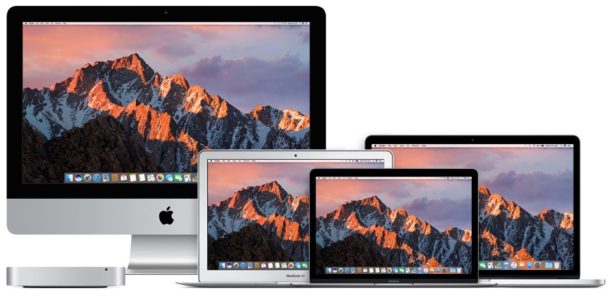
It was 2009 when Apple last released a new operating system on physical media. Things have proceeded remarkably smoothly since version 10.7 switched to download-only installers, but there are still good reasons to want a reliable old USB stick. For instance, if you find yourself doing multiple installs, a USB drive may be faster than multiple downloads (especially if you use a USB 3.0 drive). Or, maybe you need a recovery disk for older Macs that don't support the Internet Recovery feature. Whatever the reason, you're in luck, because it's not hard to make one.
As with last year, there are two ways to get it done. There's the super easy way with the graphical user interface and the only slightly less easy way that requires some light Terminal use. Here's what you need to get started.
Reverting to an earlier version of macOS isn't as easy as selecting an option from a menu. If you're on High Sierra 10.12.4 or later, and you want to revert to the version of macOS that. Choose your startup disk, and then select 'Install.' Booting with the MacOS Sierra Installer Drive. Now that you have created the boot installer for Mac OS 10.12, you can boot from any compatible Mac with it by doing the following: Connect the macOS Sierra boot drive to the Mac; Reboot the Mac and immediately hold down the OPTION key; Choose “Install macOS Sierra” from the boot menu options.
- A Mac that you have administrator access to, duh. We've created Sierra USB stick from both El Capitan and Sierra, but your experience with other versions may vary.
- An 8GB or larger USB flash drive or an 8GB or larger partition on some other kind of external drive. For newer Macs, use a USB 3.0 drive—it makes things significantly faster.
- The macOS 10.12 Sierra installer from the Mac App Store in your Applications folder. The installer will delete itself when you install the operating system, but it can be re-downloaded if necessary.
- If you want a GUI, we're recommending a different app than last year—take a look at Ben Slaney's Install Disk Creator from MacDaddy. There are other apps out there that do this, but this one is quick and simple.
If you want to use this USB installer with newer Macs as they are released, you'll want to periodically re-download new Sierra installers and make new install drives periodically. Apple rolls support for newer hardware into new macOS point releases as they come out, so this will help keep your install drive as universal and versatile as possible.
The easy way

Once you've obtained all of the necessary materials, connect the USB drive to your Mac and launch the Install Disk Creator. This app is basically just a GUI wrapper for the terminal command, so it should be possible to make install disks for versions of OS X/macOS going all the way back to Lion. In any case, it will work just fine for our purposes.
Install Disk Creator will automatically detect macOS installers on your drive and suggest one for you, listing its icon along with its path. You can navigate to a different one if you want, and you can also pick from among all the storage devices and volumes currently connected to your Mac through the drop-down menu at the top of the window. Amd radeon hd 7470 driver. Once you're ready to go, click 'Create Installer' and wait. A progress bar across the bottom of the app will tell you how far you have to go, and a pop-up notification will let you know when the process is done. This should only take a few minutes on a USB 3.0 flash drive in a modern Mac, though using USB 2.0 or other interfaces will slow things down.
The only slightly less-easy way
If you don't want to use the Install Disk Creator, Apple has included a terminal command that can create an install disk for you. Assuming that you have the macOS Sierra installer in your Applications folder and you have a Mac OS Extended (Journaled)-formatted USB drive named 'Untitled' mounted on the system, you can create a Sierra install drive by typing the following command into the Terminal.
sudo /Applications/Install macOS Sierra.app/Contents/Resources/createinstallmedia --volume /Volumes/Untitled --applicationpath /Applications/Install macOS Sierra.app --nointeraction
The command will erase the disk and copy the install files over. Give it some time, and your volume will soon be loaded up with not just the macOS installer but also an external recovery partition that may come in handy if your hard drive dies and you're away from an Internet connection.
Whichever method you use, you should be able to boot from your new USB drive either by changing the default Startup Disk in System Preferences or by holding down the Option key at boot and selecting the drive. Once booted, you'll be able to install or upgrade Sierra as you normally would.